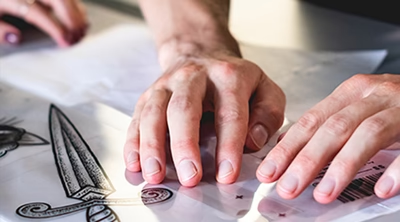Screen Printing vs Heat Press Transfer: What's Better?
Modern technology allows you to print your chosen design on clothing and choose the most convenient method. What solutions are available on the market?
If you consider selecting custom-made printing for you or your customers, screen printing and heat transfer are the two most prevailing methods. You must be finding it difficult to choose one from them, so this article will help you understand the appropriate uses with the requirements for heat transfer vs screen printing.
Evaluating the differences between heat transfer and screen printing
Screen printing and heat transfer are two of the most popular techniques for imprinting unique images on garments. Although both approaches can result in impressive outcomes, they differ greatly from one another. Heat transfer is preferable for smaller orders with intricate patterns or numerous colors, but screen printing is ideal for simpler designs and bigger quantities. But what exactly are heat transfer and screen printing? Which one is superior, and how do they operate? All of these and more will be discussed in the next section.
Screen Printing Process
One of the earliest techniques for printing shirts was screen printing, which the Chinese invented in the 10th century. How does screen printing operate, then? There are several steps in the procedure, including;
- A screen is created initially using your design.
- While the area beneath your plan is being removed to form a stencil, the region around it hardens.
- The shirt, jeans, or other clothing items are then centered on the screen and subsequently covered with ink using a squeegee.
- The ink penetrates your design's region as it seeps into the cloth.
- The ink is then dried to set it.
Screen printing patterns can be challenging since each color requires a separate screen.
Pros
- Vivid, bright hues
- Economical for large purchases
- Produces enduring, durable print
- Soft finish due to absorption into the cloth
Cons
- The setup step makes minor orders more expensive
- For designs with more than a few colors, not recommended
- Reduced resolution compared to heat transfer printing
Heat Transfer Printing
Heat transfer is the second most used technique for printing clothes designs. What is the process of heat transfer?
- Using pressure and heat, your design is transferred from a specific sheet of paper onto the cloth during the heat transfer process.
- Heat transfer vinyl (HTV) and digital heat transfer are the two most used methods of heat transfer.
- The older kind of heat transfer is called HTV printing.
- This process involves printing lettering and logos on vinyl paper that has been edge-trimmed and applied to the garment.
- The paper is subjected to intense heat and pressure from a heat press. Thus, the vinyl bits are transferred to the cloth.
- Your complete design is printed onto a specifically designed surface when digital heat transfers transfer the whole design into one heat press.
Pros
- Cost-productive concerning small orders
- Better Prints for High Resolution
- Allows printing in various colors
- Efficient Printing in tight spaces like breast pockets or hats
Cons
- Nondurable prints more likely to crack and fade after washing
- Lack of cost-effectiveness in large orders
- The prints give a stiffer feeling
Final verdict: To say which is Better?
After going through the above information, the answer to the question "Screen Printing vs Heat Press Transfer: What's Better?" seems different from before since you now have a better understanding. And the answer would be as it depends on the orders you have. As this article stated, the initial phase of setting up screens results in more expenses in contrast to heat transfers in smaller quantities. And if once the process is settled by establishing the screens, it can print faster larger quantities, thus making it reliable for completing quantitative orders.
Your decision regarding the selection between screen printing or heat transfer printing depends on the procedure's budget, quantity required, design complexity, and desired resolution and durability. In general, screen printing is most suitable for delivering larger orders with simpler designs, while heat transfers offer the best for smaller orders with complex patterns.



.jfif)
Comments
Post a Comment